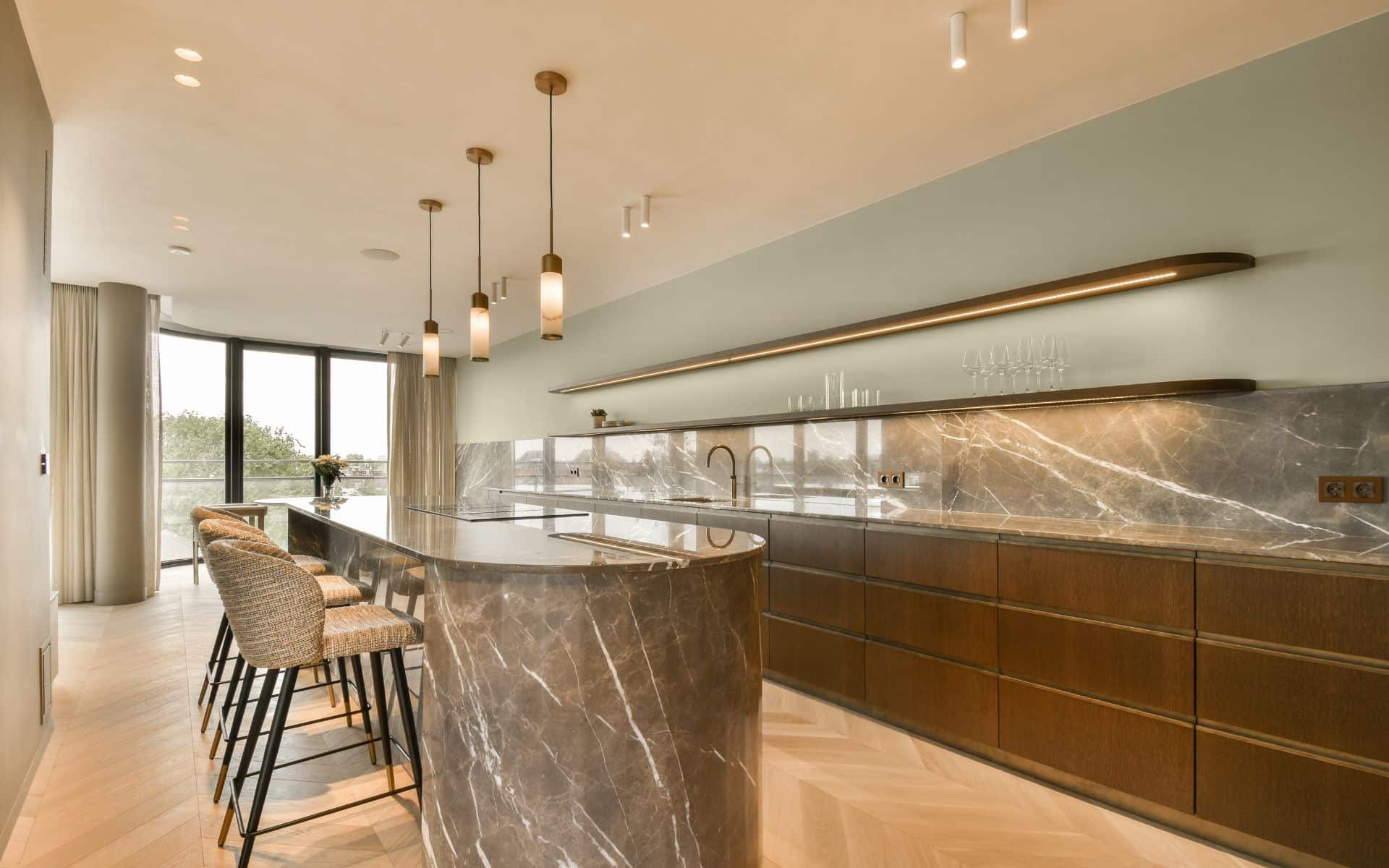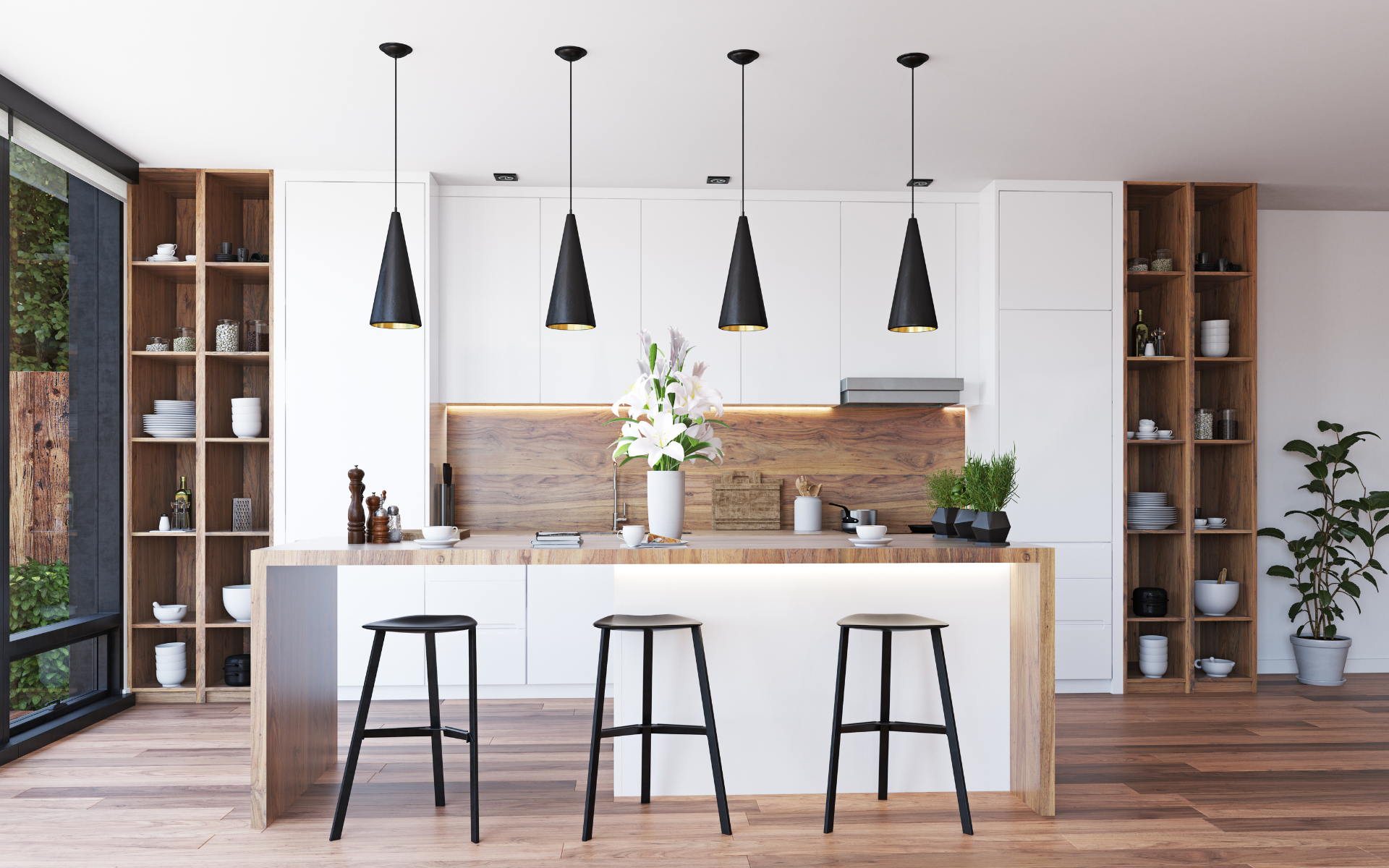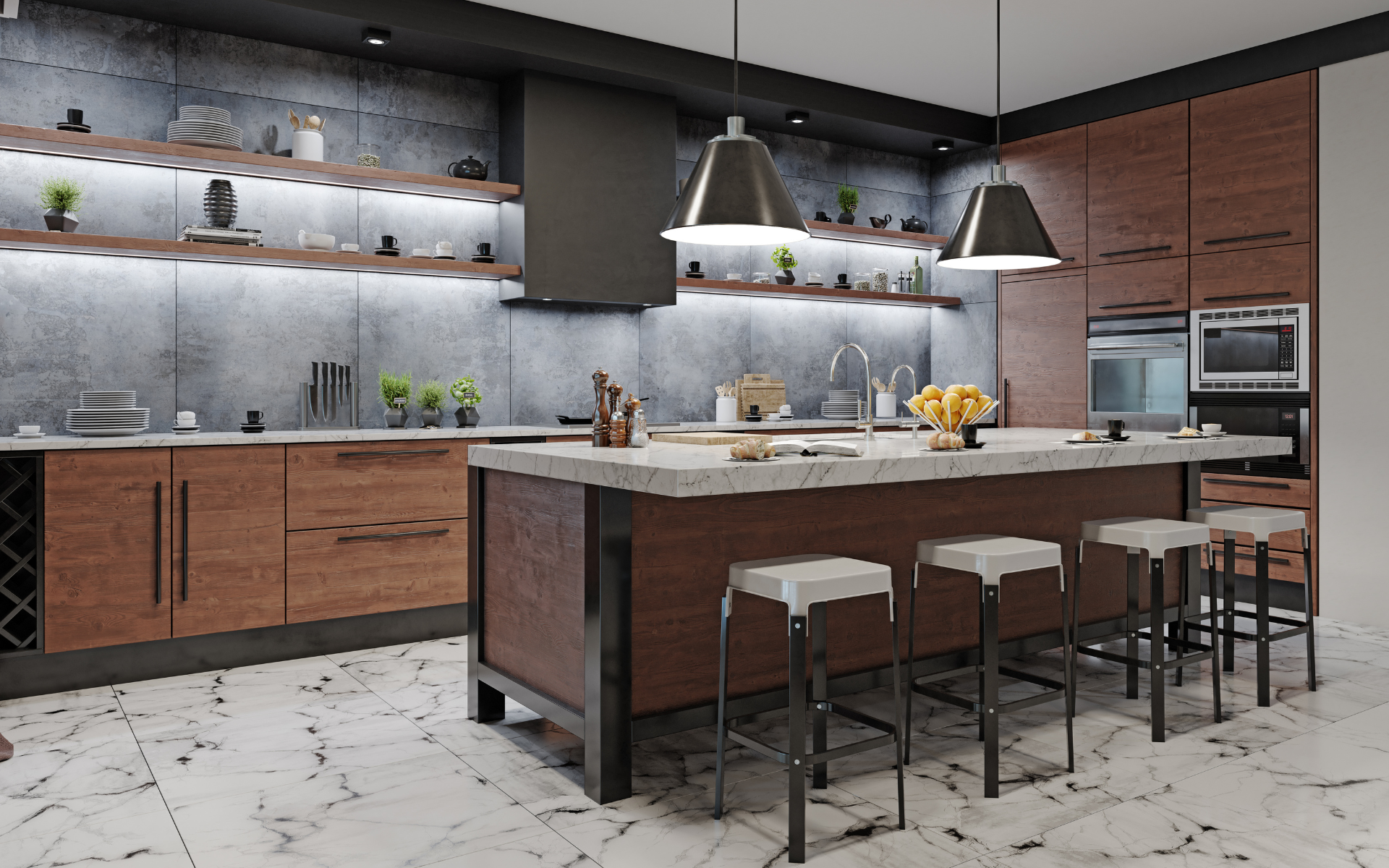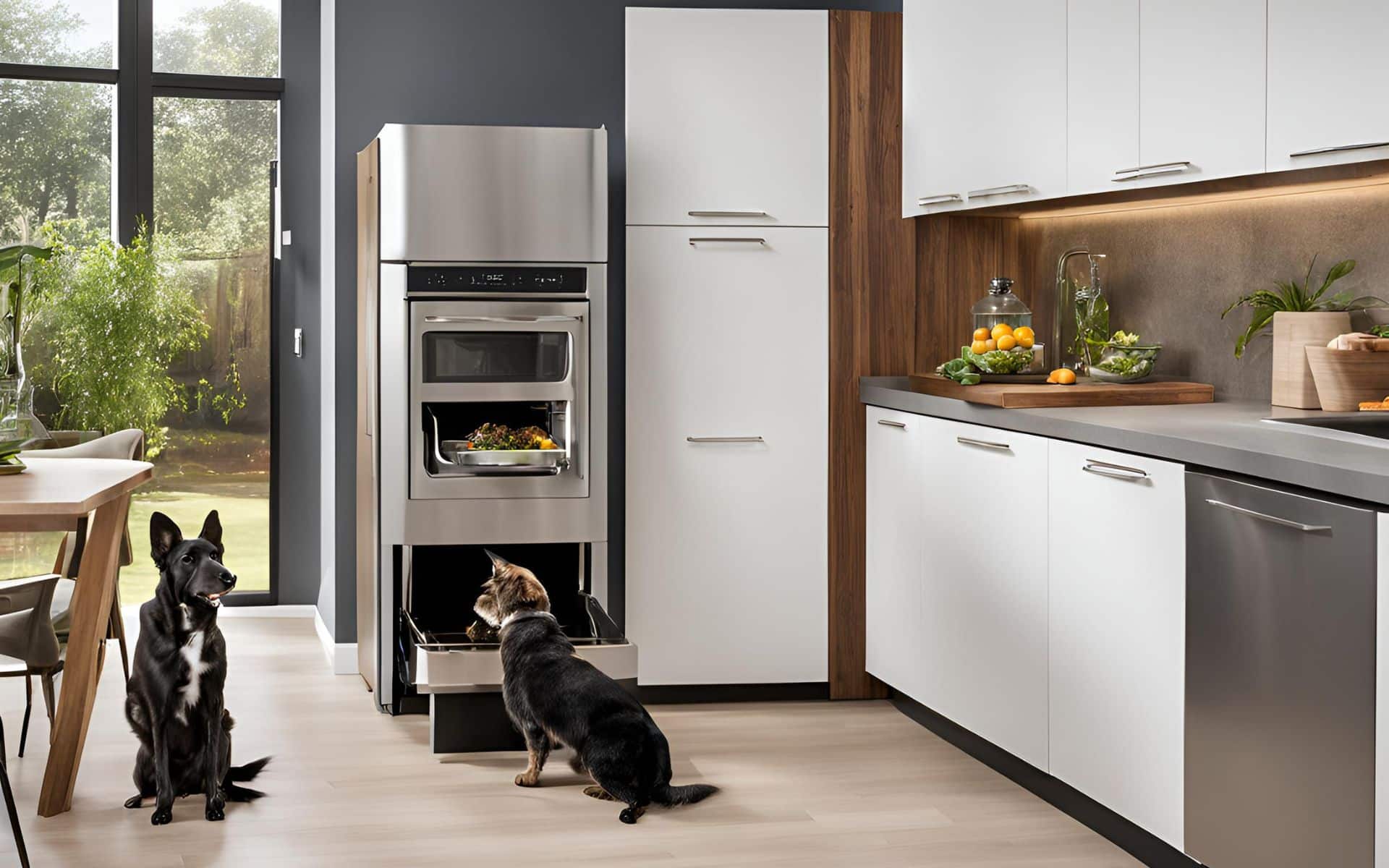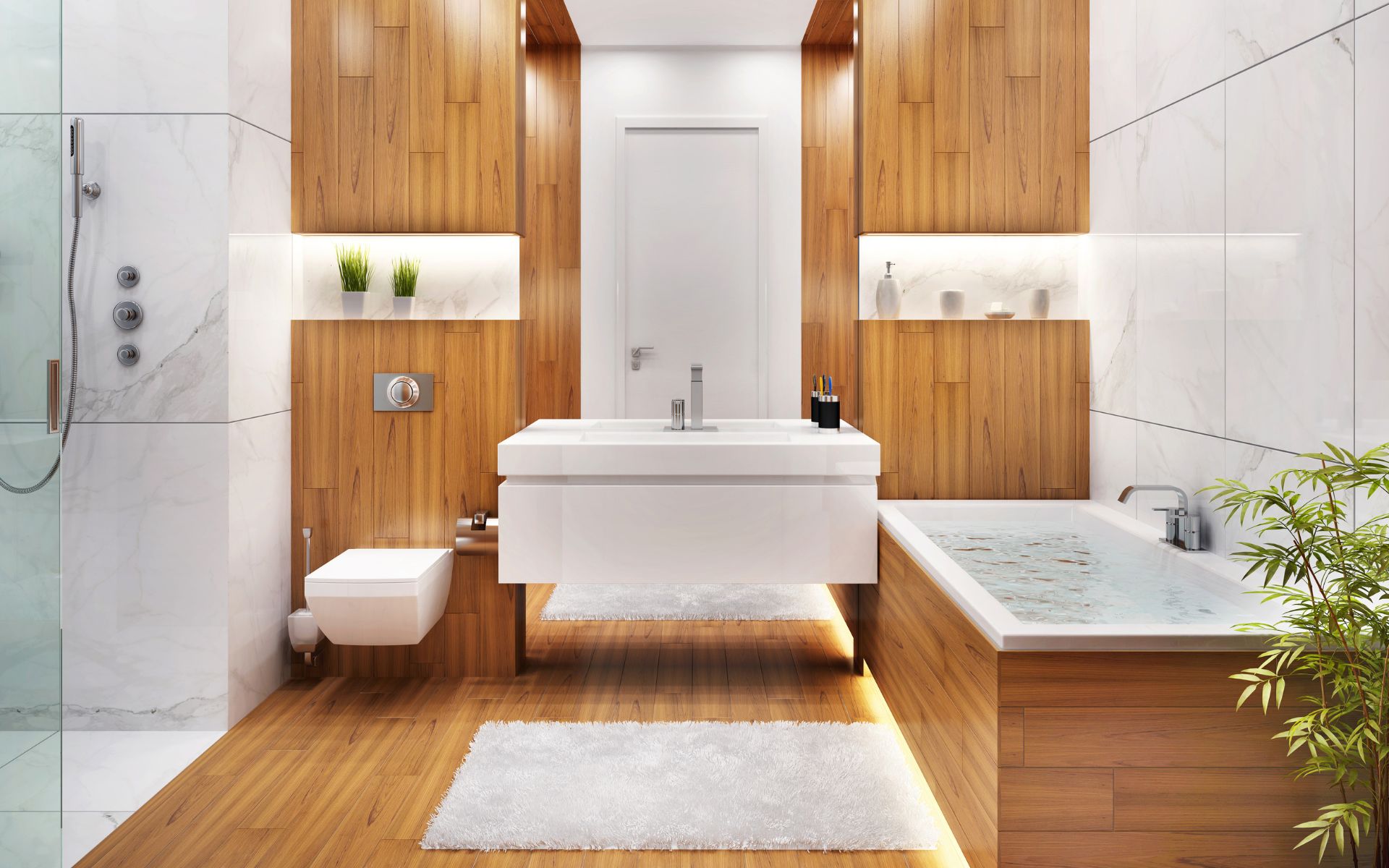The kitchen backsplash serves several important functions. First, it protects the walls around cooking areas from splatters, drips, and splashes that can stain paint or wallpaper. Second, it makes cleaning up spills easier since ceramic, stone, or glass surfaces wipe clean more easily than drywall. Finally, the backsplash provides a focal point to integrate visual flair that reflects your style.
Typically, most kitchen backsplashes use ceramic or porcelain tile. Tile comes in a vast range of sizes, colors, textures, and patterns to suit any design aesthetic. However, tile does have some downsides. The grout between tiles inevitably collects dirt and grease no matter how much you scrub. Discoloration can occur over time. Re-grouting tile requires a tedious, messy process. Cracks or chips in the tile can also develop, allowing moisture seepage behind the backsplash.
For lower maintenance, a seamless alternative, consider using other materials beyond just tile for your kitchen wall backsplash. The kitchen design options are endless – anything from natural stone to stainless steel to tempered glass can cover the wall area behind sinks, stoves, and countertops in style. Explore the pros and cons of different backsplash materials to discover options perfectly aligned with your kitchen and bath’s size, layout, and aesthetic vision.
Key Backsplash Alternative Design Considerations
When planning a new kitchen backsplash using tile alternatives, keep these essential design considerations in mind:
Heat and Moisture Resistance – First and foremost, your backsplash will need to withstand heat from stoves and ovens, along with moisture from cooking steam, spills, and cleaning. Select durable materials that will resist warping, discoloration, and damage in hot, humid cooking conditions.
Easy Cleaning – Materials that wipe clean easily without a ton of special maintenance are ideal for high-traffic cooking zones. Avoid porous surfaces that require sealing or materials that stain readily. Sleek finishes are preferable to rough surfaces that accumulate grime.
Style Cohesion – Choose backsplash materials that coordinate beautifully with your home decor’s existing countertops, cabinetry, floors, and kitchen style. Aim for a holistic, cohesive look rather than clashing designs. The backsplash should complement other elements rather than look jarringly out of sync.
Wall Coverage – Most backsplashes cover wall space between countertops and upper cabinets. Make sure your material choice works for covering larger wall expanses, not just tiny accent areas. Assess required cuts, patterns, and installation work.
Light Reflectivity – Lighter, reflective materials help keep small, dark kitchens feeling open and airy. Materials like glass tile or glossy paint bounce light around the space. Dark backsplashes tend to make small kitchens feel more closed in and heavy.
Easy Installation – Look for backsplash materials that come in larger sheets or panels to minimize complicated cuts and seams during installation. Materials attached with adhesive films, clips, or screws allow for DIY application in many cases.
Budget – Tile alternatives range from affordable options like laminate panels or paint to higher-end materials like natural stone or metal sheeting. Set realistic expectations for costs and labor time requirements for your preferred materials. Know ongoing maintenance needs too.
Keeping these practical considerations in mind while still pursuing a beautiful, unique design will ensure your kitchen remodel installs smoothly and enhances your space for years to come.
Top Non-Tile Kitchen Backsplash Ideas
Here are some on-trend, modern touch creative alternatives to tile backsplash worth considering for distinct and stylish kitchen backsplashes:
Wood
Wood backsplashes infuse warmth, texture, and nature-inspired elegance. Tongue-and-groove planks made from moisture-resistant woods work beautifully behind sinks and stoves. Standard lumber dimensions like 1×4, 1×6, and 1×8 boards are installed cleanly for an understated style.
For a rustic or craftsman look, use reclaimed barn wood with paint flecks and nail holes that show the worn patina of age. Mixing warped and irregular salvaged boards makes for an artsy statement wall. Distressed and whitewashed wood planks provide a light and airy farmhouse vibe.
Ipe, teak, and cedar offer durable and sustainably sourced natural woods ideal to withstand heat, splashes, and humidity. Make sure to apply sealant thoroughly over the wood planks for moisture protection and easy cleaning. Maintain the finish periodically.
Wood backsplashes complement both contemporary and traditional kitchen designs. Integrate wood with natural stone countertops or sleek modern cabinets for stylish contrast. From a clean whitewashed look to rustic chic, wood brings natural warmth and flair.
Stainless Steel
A stainless steel backsplash provides an ultramodern, industrial feel. The sleek metal plays off professional stainless steel appliances base cabinets and countertops for a cohesive style. Use stainless panels behind both sinks and cooktops to protect walls fully while doubling as a contemporary design statement.
From brushed metal to chrome, stainless steel backsplashes require limited maintenance other than occasional cleaning. Stainless needs no sealing resists heat well, and avoids concerns with moisture damage or staining. It also imparts a hygienic, sleek, modern look.
While plain stainless sheeting provides a minimalist look, opt for perforated or textured metal panels to increase visual interest. Accent with interesting vent hoods, floating shelves, or modern stove backguards. Combined with durability, stainless steel delivers function and flair.
Glass Tile
Glass tile avoids the drawbacks of ceramic and stone tiles requiring messy grout upkeep. Available in unlimited colors, glass tile comes in small and large formats for design flexibility.
Based on HGTV’s design guidance, glass mosaic backsplashes interject an artful style unique kitchen show that lifts the aesthetic of both traditional and contemporary kitchen space. Mosaic sheets simplify installation by assembling tiny tiles into 12” x 12” panels to easily affix to walls.
Reflective glass tile refracts light beautifully to create a luminous backsplash. While still hard and durable, glass edges expose less sharpness to maintain a sleek, polished look compared to stone and ceramic. No porous grout also keeps glass splashes cleaner.
Install metallic glass tiles like the iridescent mother of pearl or glittery gold behind the stove as the visual focal point. Use translucent white or colored glass tile to elicit an airy, open feel. Make a vibrant statement with saturated teal, coral, or cobalt blue glass.
Penny Tile
Penny tile backsplashes use tiny round ceramic tiles about 1 inch in diameter installed in repeating patterns. The continuous, groutless tile-patterned tiles’ surface creates a clean visual effect. Sheets of preassembled penny tile simplify installation compared to laboriously placing individual tiles.
Available in a spectrum of glossy or matte colors, penny tile packs a visual punch when installed in bold, contrasting bands or geometric designs. Play with vibrant hues to match or contrast cabinets and countertops. More neutral white, black, or natural clay penny tiles also keep the look elegantly understated.
Penny tile holds up better than larger tiles since the small scale helps hide any cracked, chipped, or missing tiles. Affordable pricing, low maintenance, and effortless cleaning make Penny Tile a budget-friendly backsplash option.
Brick Wall or Faux Brick
A brick backsplash adds striking texture and dimension behind kitchen sinks and stoves. Genuine reclaimed brick provides industrial sophistication and authenticity. Faux bricks recreate the natural look but at a fraction of the weight for easier installation.
Mini bricks measuring 2-3” tall adhere in panels like thick tile sheets. Brick veneer planks use layered materials to capture the look in lightweight, easy-to-cut sheets. Individual faux bricks stick to wall surfaces piece by piece using mortar-look adhesive.
For a contemporary loft look, pair matte white bricks with concrete countertops, exposed ductwork, and stainless appliances. Red brick evokes classic warmth and charm. Mix variegated colors and imperfections for the artsy character.
Painting, liming, or whitewashing brick adds further style options. The evenly groutless finish of faux brick minimizes messy maintenance issues. Capture vintage architectural elegance without the heft of traditional masonry.
Stone
Natural or engineered stone makes an upscale alternative for kitchen backsplashes without tile’s maintenance woes. Materials like marble, travertine, and slate come in large format sheets or 12” x 12” tiles to simplify installation. Stone backsplashes require less meticulous alignment work versus small mosaic sheets.
Pair stone backsplashes with countertops using the same material for elegant cohesion. Keep the look light and clean with neutral whites, creams, beiges, or pale grays. Cooler hues complement both modern and farmhouse designs. Distressed textures like tumbled travertine add natural elegance.
Use stone sealing products to protect the porous surface from moisture and stains. This minimizes etching and discoloration issues near heat and sinks. Maintain sealants periodically. For beauty minus the grout, natural stone brings elegance to kitchen backsplashes.
Wallpaper
For ease of application without messy grout or mismatched seams, today’s chic wallpaper options offer an easy backsplash choice. Washable, moisture-resistant wallpaper works in the steamiest kitchen spots when professionally installed onto primed walls.
Choose removable, peel-and-stick wallpaper with adhesive backing for maximum convenience behind appliances. This allows easy replacement down the road. Coordinate patterns to match or contrast your cabinetry finishes.
Modern graphic prints, faux bricks, geometric patterns, or wallpaper resembling textured stone or ceramic tile provide style without the maintenance of real tile. Install wallpaper from kitchen countertop to ceiling for a seamless look.
Paint
An inexpensive backsplash option – paint the wall! Semi-gloss and high-gloss latex paints formulated to withstand moisture and splatter work best. Glossy finishes allow quick wiping of spills and splashes. Match paint to cabinet colors or choose a contrasting hue.
Paint allows matching any color precisely to tie countertops, cabinets, accent walls, and backsplashes together. Or use differing tones of one shade – soft pale gray cabinets against a darker charcoal backsplash, for example. Include decorative painted accents, borders, or shapes for added flair.
Alternate gloss and matte horizontal bands, paint the bottom portion darker or delineate sections with vertical stripes or chevrons. Geometric pattern designs and freehand mural approaches make a personalized artsy statement.
Metal
For industrial elegance, metal backsplash sheets lend modern appeal. Stainless, copper, galvanized metal, nickel silver, and zinc offer a range hood eye-catching good choices to cover kitchen walls. Metal pairs well with exposed concrete, pendant lighting, and clean lines.
Metals provide a hygienic cooking surface that wipes and cleans easily. Screw metal panels like tile sheets firmly into wall studs, leaving room for natural expansion and contraction of materials. Use metal backsplashes behind both stoves and sinks to protect the entire space fully.
Sleek metal choices like stainless and nickel silver give a luxury sheen. Copper and zinc develop a living finish of the patina over time. Mix metals like mosaic penny tile patterning for an eclectic personality.
Glass Panels
For clean, sleek lines showcasing light and color, install backsplashes using cut-to-fit tempered glass panels. Custom fabricated tempered glass cuts precisely to fit your wall dimensions to create a seamless appearance. Polished edges have a clean, elegant look.
Glass backsplashes illuminated by natural sunlight or interior lighting effects refract light beautifully to elevate kitchen aesthetics. Opt for colored, frosted, or patterned glass to filter and bounce light designfully.
Screw tempered glass panels securely onto wall studs using corrosion-resistant fittings to leave a little room for movement. Use clear silicone caulk around the edges for watertight installation. Keep the look uninterrupted by eliminating framing for a stunning streamlined statement.
Bottomline
Get inspired by these gorgeous alternatives to basic tile backsplashes! Then simply select materials aligned with your kitchen’s particular style, layout, and usage. Consult experienced kitchen designers to plan creative backsplash installations that protect walls functionally while capturing unique beauty. With smart planning and creative choices, you can install an eye-catching, on-trend backsplash that protects walls and avoids the headaches of high-maintenance grout and tile.

